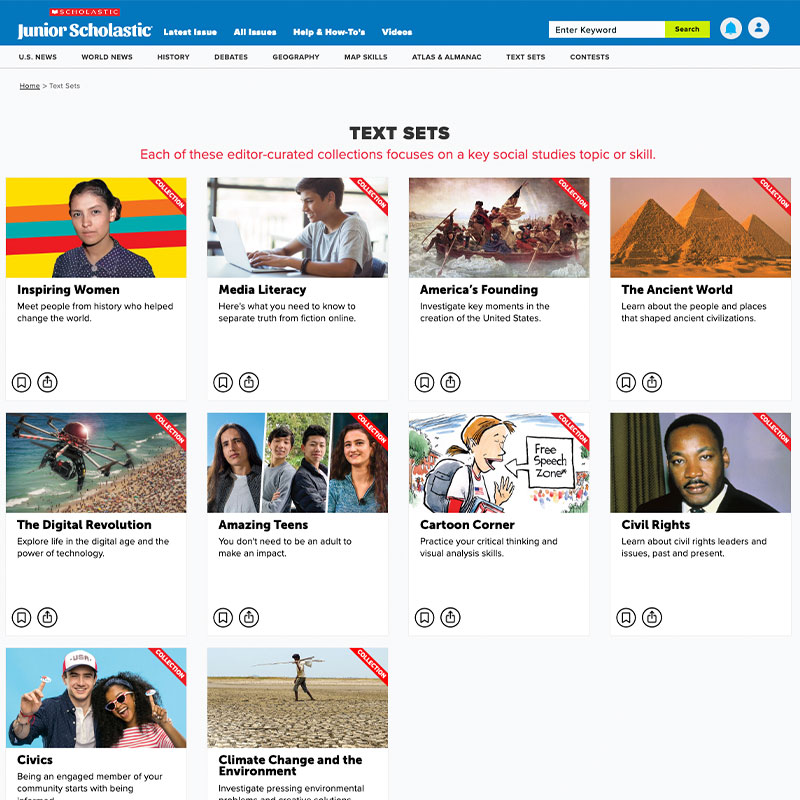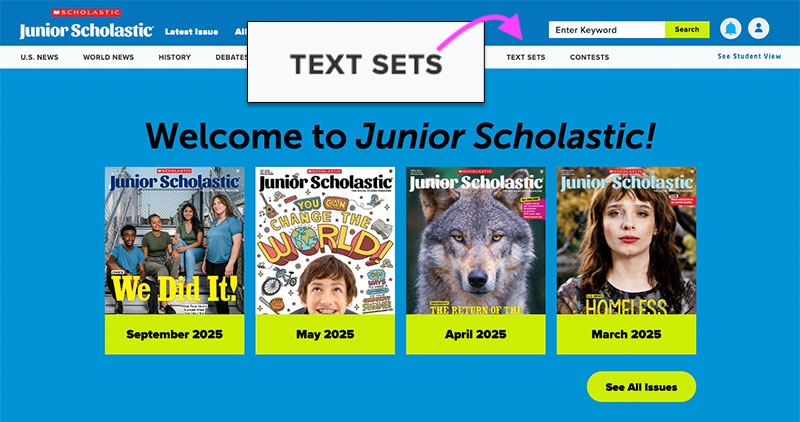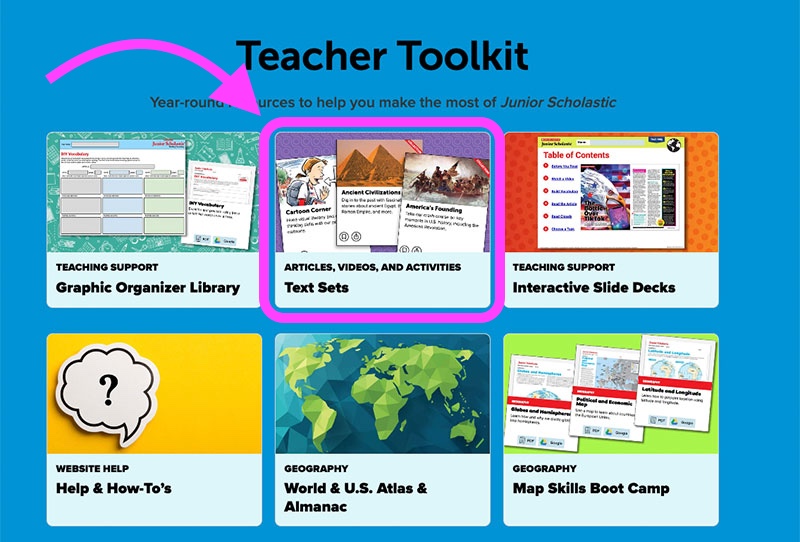Teaching With Text Sets
Teaching With Text Sets
Text sets are collections of articles and videos curated by the editors of Junior Scholastic—plus graphic organizers, close-reading questions, and other teaching resources to help students compare texts and integrate information.
You can reach the text sets from anywhere on our website by clicking the Text Sets link in the navigation bar at the top of the page.
There's also a link to the Text Sets on your teacher homepage, in the Teacher Toolkit at the bottom of the page:


